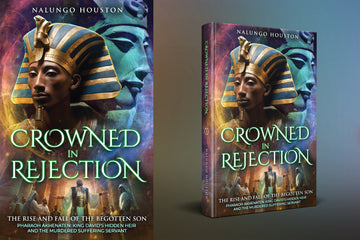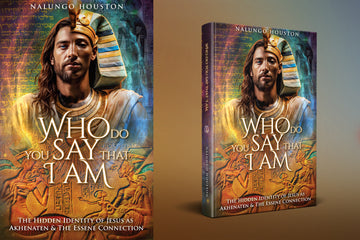Books
WELCOME!!!
Honoring ancient African royalty, my books inspire bold souls to live in truth, strength, and divine purpose.

The King Who Declared One God
Freemasonic scholar Manly P. Hall wrote:
“Akhenaten’s worship of the solar disk was not idolatry as we understand it, but an allegory for the invisible source of life, the divine intelligence, which manifests as light and heat. He alone among the Pharaohs proclaimed that there was but one Creator of all.” (The Secret Teachings of All Ages, p. XLIII)
Rosicrucian archives echo the same recognition:
“The religion of Akhenaten was pure monotheism. The Aten was no mere sun, but the symbol of the unseen light of God. His teachings, preserved in fragments, are akin to the highest mysticism of later Israel.” (Rosicrucian Digest, 1936)
Akhenaten’s Great Hymn to the Aten reads strikingly like the Psalms of David:
“O Living Aten, you shine upon the lands… you are the sole God, like whom there is no other. You created the earth according to your will, mankind, all creatures… all live when you shine for them.”
Compare this to Psalm 104:2-5:
“You cover yourself with light as with a garment… You set the earth on its foundations… All creatures look to you to give them their food in due season.”
The parallels are too close to dismiss as coincidence.

Did The Disciples Know?
In Matthew 16:15, Jesus asks: “But who do you say I am?”
Simon Peter answers: “You are the Christ, the Son of the living God.”
If Christ was the reincarnation of Akhenaten, this was not just a confession of faith — it was a recognition. The “Living God” (El Chai) is strikingly similar to the Aten epithet “the Living Aten.”
The Essenes — the desert sect to which John the Baptist is often linked — preserved traditions of a Teacher of Righteousness who would be rejected, killed, and return in glory. Freemasonic writer Hall notes:
“The Essenes held doctrines parallel to those of the Aten cult… and looked for the return of their illumined master.”
Did the disciples realize that their Teacher had walked the earth before, not in Galilee, but in Egypt’s golden age?
In later Rosicrucian writings (1950s issues of Rosicrucian Digest) Akhenaten’s Aten rays and ankh imagery are described as:
“…bestowing the breath of life and the seal of divine favor upon the chosen, marked upon the brow in token of their consecration to the Light.”
(Rosicrucian Digest, Vol. 31, No. 8, 1953 — AMORC archives, San Jose)
Masonic allegory from Albert Pike (Morals and Dogma, 1871):
“The seal upon the brow is the mark of the initiate, a relic of the Mysteries…”
While not naming Akhenaten specifically, Pike’s words are often linked to Aten imagery by esoteric commentators.
“The Essenes held doctrines parallel to those of the Aten cult… and looked for the return of their illumined master.”
Did the disciples realize that their Teacher had walked the earth before, not in Galilee, but in Egypt’s golden age?
UNCOVER WHAT PEOPLE AROUND THE WORLD THINK OF

